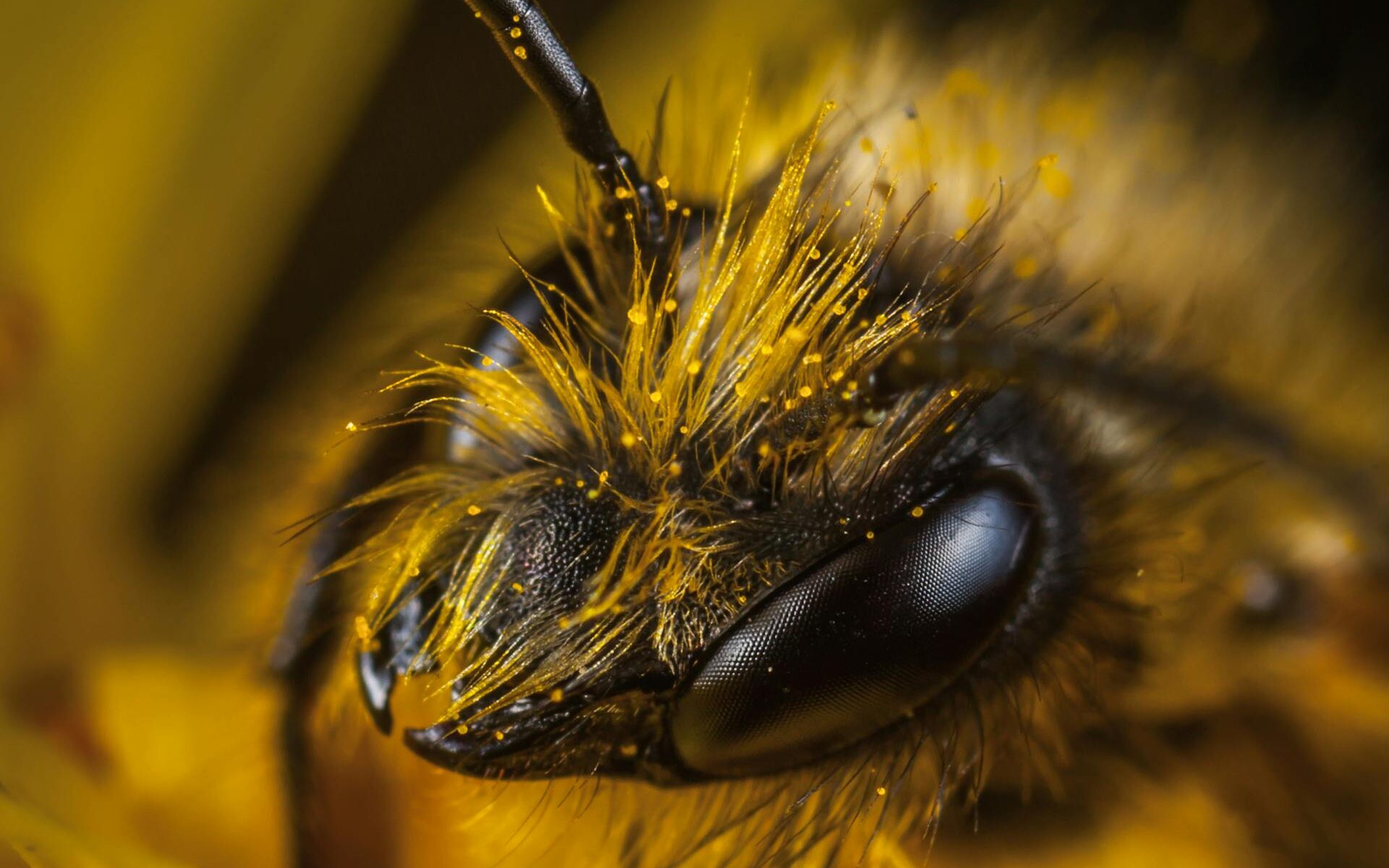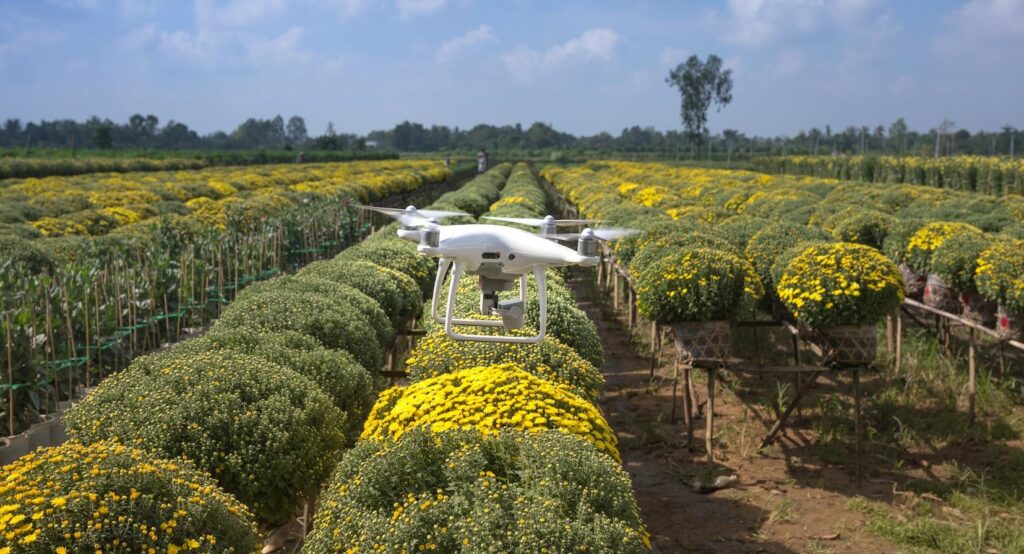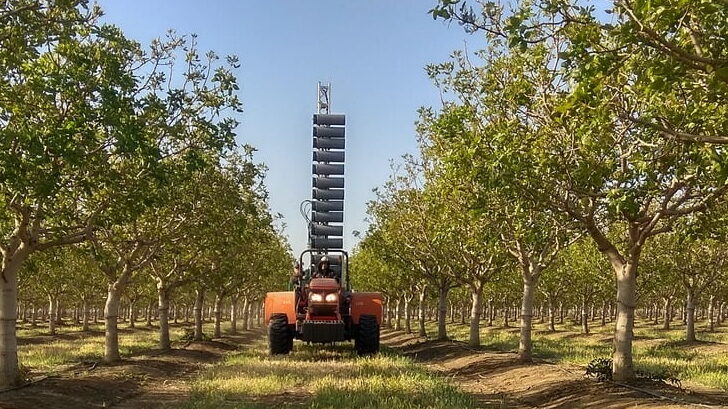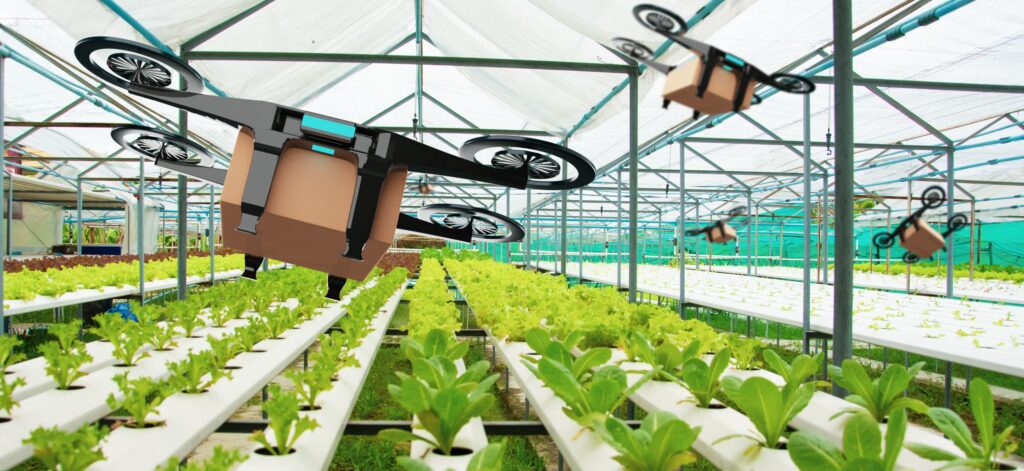Swooping through the air, this integral player in farming gathers precious pollen from flora laden with the brilliant yellow grains and then carefully distributes it onto flowers and plants. But this is not a bee – this is new technology designed to perpetuate the delicate cycle of life.
QueenDee (the “Dee” comes from the drones that are a substitute for bees) is harnessing the power and flexibility of drones to boost artificial pollination as the world population grows and with it the demand for food.
The company has developed a device that attaches to the underside of a drone, which can then be guided across rows of plants and flowers to collect or distribute pollen.
The pollen collection is carried out in two ways, QueenDee CEO Adi Arbiv tells NoCamels.
The first method is a vacuum attached to the device, which can suck up pollen grains. And, Arbiv points out, flowers produce far more pollen than they need to reproduce, which affects the amount that the vacuum gathers.
“When a flower produces pollen, the vast majority of the pollen never [gets to] where it’s supposed to reach,” she says. “We don’t have to collect millions of pollen grains; it’s enough for us to collect two milligrams of pollen.”
The second method is based on electrostaticity and uses delicate fibers and brushes to gather the pollen in imitation of the hairs on a bee, called scopa, that are designed for this purpose.
“When a bee approaches a flower, it has positive charge around it,” Arbiv says. “The pollen grains are negatively charged, so they are attracted to the bee.”
QueenDee gives a positive charge to the fibers and brushes that it uses, akin to the charge of a bee, in order to draw the pollen to them. And In both cases, the collected pollen is then dispersed onto the flowers.

That dispersal of the pollen grains is a process that has to be managed very carefully, says Arbiv, due to the limited amount that is gathered during the initial collection stage.
“We don’t want to waste everything when we turn that thing on,” she explains. “We want them to be dispersed evenly across the greenhouse.”
Furthermore, the plants that receive the pollen have to be sufficiently mature for it to be effective. QueenDee uses AI-driven software – including image recognition – to ensure that the right plants get pollen at the right time.
“We’re trying to be very specific, and try to see exactly where the flowers are that are mature enough to get pollen, and disperse the pollen grains right above these flowers,” Arbiv says.
“If flowers that are in a certain part of the greenhouse are younger, we’re not going to disperse the pollen there.”
Arbiv says that the idea for the pollen device came during a 2023 hackathon centered around drone technology, where some participants were asked to focus on an aspect of agriculture.
“We tried to figure out what were the main issues in agriculture today, and we came to the conclusion that pollination was one of the biggest issues,” she says.
And from that prompt came the idea to use drones to enhance pollination for farming.
“I said, we have to go there; we have to find a way somehow,” recalls Arbiv.
Sign up for our free weekly newsletter
Subscribe
Once they had won the hackathon, the QueenDee founders had to address a myriad of issues that come both with creating a startup from the ground up and with refining an idea to become a viable solution.
“[There are] problems that arise when you try to fly a drone in a greenhouse; it’s not as simple as it sounds,” Arbiv says by way of example.
“There are many, many challenges when you take a drone over a plant, and then when you’re trying to collect something but the drone is making too much wind – how will you handle that?”
But with her twin backgrounds in software development and molecular biology, Arbiv had found a perfect outlet for her expertise and interests.
“I used to focus on botany and ecology,” she says of her studies. “It’s something that has ever been close to my heart, and I’ve always tried to combine biology, agriculture and software.”
Arbiv says she was inspired by the multitude of companies that today are taking advantage of drone technology and trying to apply it to agriculture.
“There are drones with pesticides that spray fields with pesticides, and drones that can detect diseases and parasites and all sorts of things,” she says. “I thought it would be great to somehow contribute as well.”
She explains that there is one other Israeli company – Edete – that is using technology in artificial pollination, which found its success in working with outdoor crops. QueenDee, however, is mainly focusing on indoor locations such as greenhouses, which can be many acres in size.

The QueenDee drones equipped with the pollen collection and distribution devices are currently flown by an operator, using what the company says is a “user-friendly” dashboard that can also monitor temperatures and humidity levels.
Even so, the long-term plan is to make them fully autonomous – primarily once the farmers using them have their reservations over unmanned aircraft flying among their delicate plants and flowers eased.
“Farmers are very reluctant when you tell them that something is autonomous,” Arbiv explains.
“They want to make sure that nothing is harmed, that you’re not hurting plants and that the flowers are not falling off the plants. Because the flowers are the future fruits, and if you cause damage to the flowers, they will have no fruits to sell.”
QueenDee is an offshoot of Tech 19, a company in the southern city of Yeruham, some 60 km (37 miles) from the Gaza border, that provides a range of technological solutions, including in the fields of drones, satellites and robotics.
It was also a recent finalist in a startup competition organized by Synergy7, a new Be’er Sheva innovation hub, and the Merage Israel Foundation, which share the mission of cultivating the tech ecosystem in the Negev. The competition was designed to foster and support the most promising technology startups operating within the region, focusing on the sectors of healthcare, cybersecurity, and robotics.
The startup and its revolutionary technology are self-funded, and its team employed in other places to keep paying the bills.
“We have our day jobs, and this is our night job,” Arbiv says.
For now, at least.
Related posts

Editors’ & Readers’ Choice: 10 Favorite NoCamels Articles

Forward Facing: What Does The Future Hold For Israeli High-Tech?

Impact Innovation: Israeli Startups That Could Shape Our Future




Facebook comments